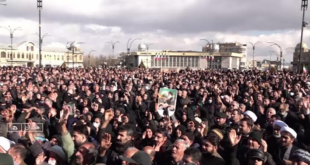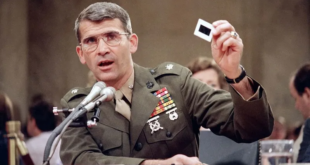Young Bosnian-Dutch activists are campaigning to raise the low level of public knowledge about the 1995 Srebrenica genocide and the Netherlands’ role in the UN peacekeeping mission that did not prevent the mass killings of Bosniaks.
“It’s still very difficult to talk about Srebrenica,” said Marc van Berkel, who researches historical topics in education and recently published a report on how the July 1995 massacres are covered in Dutch history textbooks.
“It’s difficult because the events that took place in 1995 and before that are relatively recent; it has not entirely become historical. Everyone who has been an eyewitness to these tragic episodes wants to express his or her own experiences.”
The Netherlands has a specific role in the history of Srebrenica because some of its troops – a battalion known as ‘Dutchbat III’ – were stationed as UN peacekeepers at a nearby base at Potocari when thousands of Bosniak men and boys tried to flee from Bosnian Serb forces.
The Dutchbat III troops have been accused of not doing enough to protect the Bosniaks, and of handing over 350 of the Bosniaks who sought refuge at the UN base to Bosnian Serb troops and police, who later killed them.
The Dutch Supreme Court ruled in July 2019 that the Netherlands was 10 per cent responsible for the deaths of those 350 men, and the Dutch government established an expert commission last week to decide how much compensation to award to the victims’ relatives.
Van Berkel said that in the Netherlands, public discourse is mostly about “groups of Dutchbat soldiers who feel they are treated unfairly. They feel they are also victims.
The Dutch troops insist they were given an impossible task – watching over the UN-declared ‘safe zone’, which had been encircled by Bosnian Serb forces, without using force except for in self-defence, and without adequate support from their superiors.
“On the other side there is the Bosnian community [in the Netherlands] who are genocide survivors. They want justice and recognition,” van Berkel explained.
In his research, van Berkel found that Dutch history textbooks pay very little attention to the wars in the former Yugoslavia and the genocide of Bosniaks from Srebrenica. The word ‘genocide’ itself is hardly used.
When Srebrenica is mentioned in the textbooks, it is often looked at from the perspective of the Dutch soldiers and the role of the Netherlands in the peace mission in Bosnia and Herzegovina.
The main message is that the international community and in particular the United Nations failed, not Dutchbat.
“This is what is in the books and I didn’t specifically research what teachers are doing with that information. But I’ve also interviewed students who are going to be history teachers. And most of them knew nothing about Srebrenica,” he said.
Srebrenica is part of the Canon of Dutch History, an officially-approved chronological summary of the history of the Netherlands to be taught in schools. But the supporting materials provided mainly focus on the Dutchbat III perspective.
Van Berkel argues in his report that the men and boys who were murdered during the Srebrenica genocide are often lumped together as a group: the Muslims. In this way, they are merely portrayed as victims, not as real humans who had lives, families, history and culture.
“I’m not saying that you should skip the personal experiences of Dutchbat soldiers, but the main message should be that there was a genocide in Europe. And there is too little attention for what kind of impact it has on the Bosnian community, while there are so many Bosnians living in Netherlands,” van Berkel said.
‘People from our generation don’t have a clue’
The lack of knowledge about the genocide is also one of the reasons that a collective called Bosnian Girl started a campaign called ‘Srebrenica is Nederlandse geschiedenis’ (‘Srebrenica is Dutch History’). The collective consists of four Bosnian-Dutch women, all in their early 30s, and its name is inspired by the well-known artwork by Bosnian artist Selja Kameric.
“While talking about our experiences as Bosnian Dutch women, we felt like every year there is less and less attention for Srebrenica, while at the same time the Netherlands played such an important role,” said Daria Bukvic, one of the members of the collective.
“People from our generation really don’t have a clue about what happened in Bosnia. It’s painful that sometimes I even have to explain why I am living in the Netherlands,” Bukvic added.
The campaign has several goals. The first is to enhance history teaching and to include the perspectives of the survivors of the genocide. This involves setting up a website with a collection of personal stories and other materials.
“It’s problematic that young people think that the last genocide in Europe was in 1945. People need to be more aware of the value of freedom and that it is not something you can just take for granted,” said Bukvic.
The collective also wants a permanent memorial to be built and financing from the government for an annual commemoration in The Hague. So far, the collective has established a temporary monument, an online photo exhibition consisting of 25 portraits of Bosnian-Dutch men and women, all aged 25.
Although they don’t have memories of the war themselves, they symbolise the connection between the Netherlands and Bosnia and embody the two countries’ shared past and future.
The portraits will be installed at het Plein, a square in The Hague right in front of the entrance to the Dutch parliament, during the annual Srebrenica commemoration on July 11.
This year, the Dutch Defence Minister, Ank Bijleveld, planned to go to the commemoration at the Srebrenica Memorial Centre in Bosnia, but had to cancel because of the coronavirus pandemic.
Bijleveld will attend the commemoration in The Hague instead, and on behalf of the Dutch government, a video message from Prime Minister Mark Rutte will be screened the Srebrenica Memorial Centre.
The Dutchbat III veterans’ association also wanted to go to Srebrenica, but instead will join the event in The Hague.
‘You cannot be neutral when it comes to genocide’
After 25 years, it is still difficult to bring Dutchbat soldiers and Srebrenica survivors together, but things seem to be changing. One example is the theatre play ‘Gevaarlijke Namen’ (‘Dangerous Names’) which will be staged later this year.
“Many times Dutchbat soldiers and survivors were opposite each other, for example in court,” said its director, Boy Jonkergouw, who also created a play with Bosnian war veterans in 2017.
“But there is so much that actually connects these two groups. They share a trauma, the feeling of being abandoned and they also both feel that the world does not understand what happened in Srebrenica in 1995.”
Jonkergauw says he started the process as a typical Dutch director: “I wanted to show multiple perspectives, to be as neutral as possible and not judge anyone,” he said.
“But the more I learned about the war in Bosnia, the more I realised that the reason that more than 8,000 people were murdered in Srebrenica is exactly that so-called moral impartiality. And I concluded that you cannot be neutral when it comes to genocide, as a director I have to make a standpoint.”
The play tells the story of Alma Mustafic who grew up in Srebrenica and was 14 years old in 1995. After the war, she went to the Netherlands and has lived there ever since. Her father was Rizo Mustafic, who worked as an electrician for Dutchbat III.
In 2013, she and her family won a case against the Dutch state. Her father had the legal right to stay at the Dutchbat compound in July 1995, but he was sent away with the others and Bosnian Serb forces killed him.
Now Alma Mustafic will be on stage, which is something completely new for her. In her everyday life, she is a teacher and researcher at Utrecht University of Applied Sciences.
“I want to commit myself to enhance a common vision on how to commemorate the genocide,” said Mustafic.
“We all stick too much to our own stories, without really talking to each other. For this play, I was forced to talk with Dutchbat soldiers. Which was hard and you have to prepare well for that. But it also gave me many good things in return,” she added.
Mustafic also asked Dutchbat III veterans to contact her if they knew her father Rizo, because she wants to collect stories about him.
“I noticed that so many Duchtbat soldiers are hesitant in talking to me. They still want to defend themselves and explain how powerless they were,” she said.
“I know that and I don’t have to hear that again. I just want to build something positive now. Because if we work together, we can make sure people don’t forget this genocide.”
Former Dutchbat III soldiers have many different perspectives about what happened in July 1995. For one of them, Remko de Bruijne, it is important that people know that he actually did fight the Serbs.
“When the Serbs were entering the [Srebrenica] enclave, we were ordered by our commander to shoot them. To prevent them from coming closer,” de Bruijne recalled.
“But the UN told us we had to stop that, because being a peacekeeper means you have to be neutral and you are not allowed to shoot, unless you are attacked yourself. We were told to shoot overhead, but we knew that would not stop the Serbs.”
In the end, de Bruijne knows they wouldn’t had a chance at all: “Only 150 of us were infantry and knew how to shoot. There were more than 3000 Serbs. And after some days, our ammunition was just gone.”
De Bruijne is still fighting for recognition for soldiers who he says were sent on an impossible mission. He has spoken about this with the Dutch Defence Minister, and wants Dutchbat veterans and Srebrenica survivors to fight their battle together.
“We are both victims of international policy and if we work together, we might have a better chance in reaching our goals,” he argued.
Mustafic also said that she hopes that she can bring the Dutchbat troops and the survivors of the genocide together to highlight the truth about what happened 25 years ago in Srebrenica because she can understand both of their perspectives.
“My father Rizo was always a connecter. Between Muslims and Serbs and between Dutchbat and the local population in Srebrenica,” she said. “I want to continue the work that he did.”
 Eurasia Press & News
Eurasia Press & News



